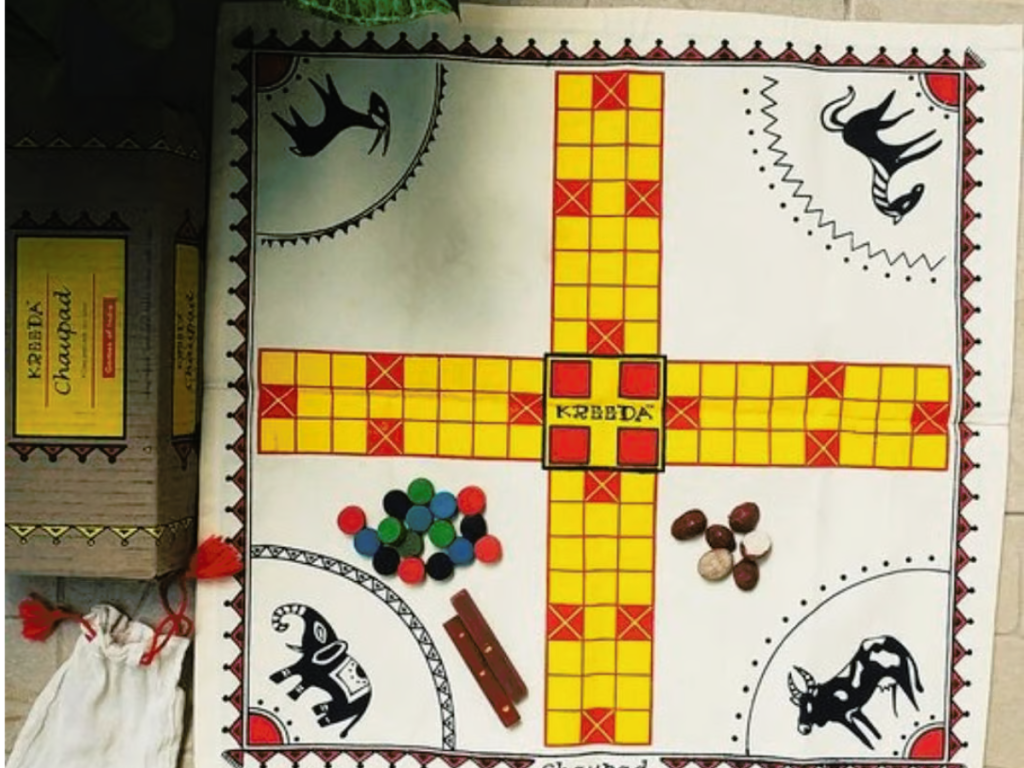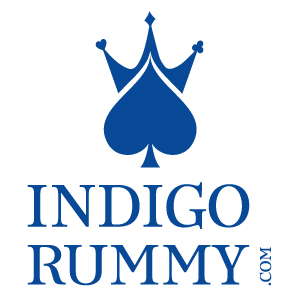India’s diverse board game culture: From classics to modern favorites

Prepend to the content

Board games have been an integral part of Indian culture for centuries, offering not just entertainment but also serving as a means for social interaction and skill development. While traditional games like Snakes and Ladders and Pachisi (also known as Chaupar) have deep roots in Indian heritage, modern board games have also gained popularity in recent years, reflecting a blend of traditional and contemporary gaming preferences. In this article, we’ll go into both the timeless classics and the newer additions to the Indian board game landscape.
Snakes and Ladders (Moksha Patam)
Snakes and Ladders is an old game from India. You roll a dice and move your piece along a path with numbers. Sometimes you land on a ladder, which helps you climb higher. These ladders stand for good things like being nice or working hard. But sometimes you land on a snake, which makes you slide back. These snakes represent bad things like lying or being mean.
So, the game is like life. Sometimes good things happen that help us move forward, and sometimes bad things happen that set us back. It’s a fun way to learn that life has ups and downs, and it’s important to make good choices along the way.
Chess
Originating in ancient India as Chaturanga, chess has evolved into a globally recognized game of strategy and intellect. Played on an 8×8 grid with 16 pieces per player, including kings, queens, knights, bishops, rooks, and pawns, chess requires foresight, planning, and tactical expertise. Players aim to checkmate their opponent’s king while safeguarding their own. Chess has a rich history in India, with the country producing numerous grandmasters and hosting prestigious tournaments. It is widely played in schools, clubs, and homes across the nation, serving as a symbol of intellectual pursuit and competitive spirit.
Carrom
Carrom, sometimes referred to as “finger billiards” or “strike and pocket,” is a beloved tabletop game that originated in the Indian subcontinent and has gained popularity worldwide. It is commonly found in Indian households, where families and friends gather to enjoy its fast-paced and engaging gameplay.
The game typically involves two to four players, each controlling a striker, which is a larger disc-like piece used to strike smaller discs known as carrom men. The objective is to use the striker to pocket the carrom men into one of the four corner pockets located at the edges of the square-shaped playing surface. The first player or team to pocket all of their carrom men, as well as the red queen (a special carrom man), wins the game.
Tournaments and competitions are common in regions where carrom is popular, such as India, Sri Lanka, Bangladesh, and parts of the Middle East. These events attract skilled players who showcase their abilities and compete for prestigious titles and prizes.
Indian-themed Versions of Monopoly
Indian-themed versions of Monopoly have gained popularity in recent years, offering a unique twist on the classic board game by incorporating elements specific to Indian culture and geography. These editions typically feature iconic cities such as Mumbai, Delhi, Kolkata, Chennai, and others, each with their own set of landmarks, attractions, and cultural references.
Players can buy and sell properties like the Gateway of India in Mumbai, the Red Fort in Delhi, the Victoria Memorial in Kolkata, or the Marina Beach in Chennai. Instead of the traditional Monopoly board’s familiar streets and utilities, these Indian-themed versions showcase the rich diversity and heritage of the country, allowing players to explore and invest in well-known locations. In addition to landmarks, Indian-themed Monopoly editions often include elements such as festivals, historical events, traditional cuisines, and famous personalities relevant to each city or region. These additions not only enhance the gameplay experience but also serve as a celebration of India’s vibrant culture and history.
The origin of the original Monopoly board game can be traced back to the early 20th century and involves several key figures and iterations before it became the game we know today.
The precursor to Monopoly can be found in “The Landlord’s Game,” created by Elizabeth Magie in 1903. Magie, an American game designer, intended her game as a teaching tool to illustrate the economic principles of Georgism, which advocated for the taxation of land values to curb monopolies and promote economic equality. The Landlord’s Game featured a circular board with properties, rents, and taxes, and players aimed to accumulate wealth while highlighting the negative aspects of monopolies.
Sequence
Sequence is a captivating board game that seamlessly blends elements of strategy and luck, offering players an engaging and competitive experience. The game is played on a board divided into a grid of squares, with each square representing a playing card in a standard deck (except for jacks, which are wild). The objective of Sequence is to create sequences of five of your colored chips in a row, either horizontally, vertically, or diagonally, on the game board. Players take turns placing their colored chips on the board, strategically positioning them to build their sequences while simultaneously blocking their opponents from completing theirs.
In addition to placing chips, players also have access to special cards that can be strategically used to gain an advantage. These cards allow players to either remove an opponent’s chip from the board, place one of their own chips on a desired space, or even block an opponent from playing a specific spot on the board.
In India, Sequence has gained popularity as a beloved board game enjoyed by people of all ages. While the core rules and gameplay mechanics remain the same as the original version, there are some adaptations and variations that cater to the preferences and cultural context of Indian players. One notable adaptation is the incorporation of Indian themes and aesthetics into the game. Indian-themed versions of Sequence may feature artwork, designs, and symbols inspired by Indian culture, such as traditional patterns, iconic landmarks, or motifs from Indian mythology.
Ludo
The origins of Ludo can be traced back to ancient India, where it was known as “Pachisi.” Pachisi was a traditional Indian board game played by members of royalty and nobility as early as the 6th century AD. The game was commonly depicted in ancient Indian art and literature, highlighting its popularity and cultural significance. Pachisi was typically played on a cross-shaped board with 14 squares on each arm, similar to the modern Ludo board. Players used cowrie shells or small wooden pieces as tokens and threw six or seven cowrie shells to determine the movement of their tokens.
Today, Ludo is a timeless board game that has been enjoyed by people around the world for generations. Its simple yet engaging gameplay makes it a popular choice for players of all ages, from children to adults. The game is typically played on a square board divided into a cross-shaped pattern, with each arm of the cross representing a player’s “home” area.
The objective of Ludo is to move all of your colored tokens from your home area around the board and into the center, known as the “home” or “finish” zone. Players take turns rolling a standard six-sided dice and moving their tokens accordingly. Tokens move around the board in a clockwise direction, following the path marked by the squares.
Catan
Catan, originally created by Klaus Teuber in Germany in 1995, quickly gained acclaim worldwide for its innovative gameplay and strategic depth. Despite its European origins, the game found its way into various international markets, including India. The adaptation of Catan in India involved localization efforts to make the game more accessible and appealing to Indian players.
The popularity of Catan in urban Indian households can be attributed to its engaging gameplay and strategic elements that appeal to a wide audience. As players strive to establish their settlements, roads, and cities on the island of Catan, they must carefully manage their resources and negotiate trades with other players to gain the upper hand. This combination of resource management, negotiation, and tactical decision-making makes Catan a favorite among both casual gamers and board game enthusiasts alike in India. Additionally, the game’s relatively simple rules and dynamic gameplay ensure that each session offers a fresh and enjoyable experience, fostering its continued popularity in Indian gaming circles.
Scrabble
Scrabble, a classic word game invented by Alfred Butts in the 1930s, has become a beloved pastime for millions around the world. In India, Scrabble has found a dedicated following among enthusiasts who relish the challenge of constructing words and outmaneuvering opponents on the game board.
Competitive Scrabble in India has gained significant traction over the years, with clubs and organizations hosting regular tournaments and events. These gatherings attract players of all ages and skill levels, fostering a vibrant community of word aficionados eager to showcase their linguistic expertise.
Pictionary
Pictionary, a game that sparks creativity and laughter, was invented by Robert Angel in the late 1970s. Originally conceived as a way to entertain his friends at a Christmas party, Pictionary quickly gained popularity for its simple yet exhilarating gameplay.
In India, Pictionary has been embraced enthusiastically, finding its way into gatherings, parties, and family game nights across the country. Its adaptation in India involved making the game more accessible and appealing to the diverse Indian audience.
Pictionary challenges players to convey words or phrases through drawings while teammates attempt to guess the correct answer within a time limit. Players take turns drawing on a whiteboard or paper, using simple sketches to represent objects, actions, or concepts. Pictionary encourages quick thinking, artistic interpretation, and teamwork, making it a favorite choice for gatherings, parties, and family game nights. Its simple rules and engaging gameplay make it accessible to players of all ages and skill levels, fostering laughter and camaraderie as participants race against the clock to decipher each other’s drawings.
Checkers (Draughts)
Checkers, also known as Draughts in some regions, is a timeless game that traces its origins back thousands of years. Its exact beginnings are uncertain, but variations of the game have been played across different cultures and civilizations throughout history. The modern version of Checkers as we know it today emerged in the 16th century in France and England, where it gained popularity as a recreational activity and a test of strategic skill.
In India, Checkers has been embraced as a beloved pastime, enjoyed by people of all ages in various settings such as parks, cafes, and homes
A timeless game of skill and tactics, Checkers is played on an 8×8 board with pieces typically in black and white (or red). Players take turns moving their pieces diagonally forward, aiming to capture their opponent’s pieces by jumping over them. The goal is to either capture all of the opponent’s pieces or block them so they cannot move. Checkers is easy to learn yet offers deep strategic complexities, requiring players to anticipate their opponent’s moves while planning their own. It is a beloved pastime in India, often played in parks, cafes, and homes, providing hours of engaging entertainment for players of all ages.
From old games that are very much a part of Indian culture to new versions that talk about things happening now, board games are still very popular in India. People enjoy playing them. These games help bring families and friends together and give them something fun to do. Even as new games come out, the old Indian ones are still loved. They mix old ways with new ideas, making them exciting for players.
The post India’s diverse board game culture: From classics to modern favorites appeared first on G2G News.



